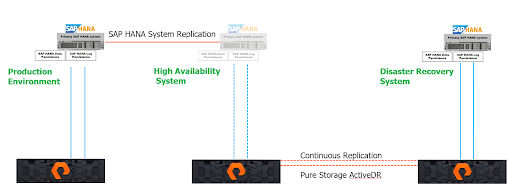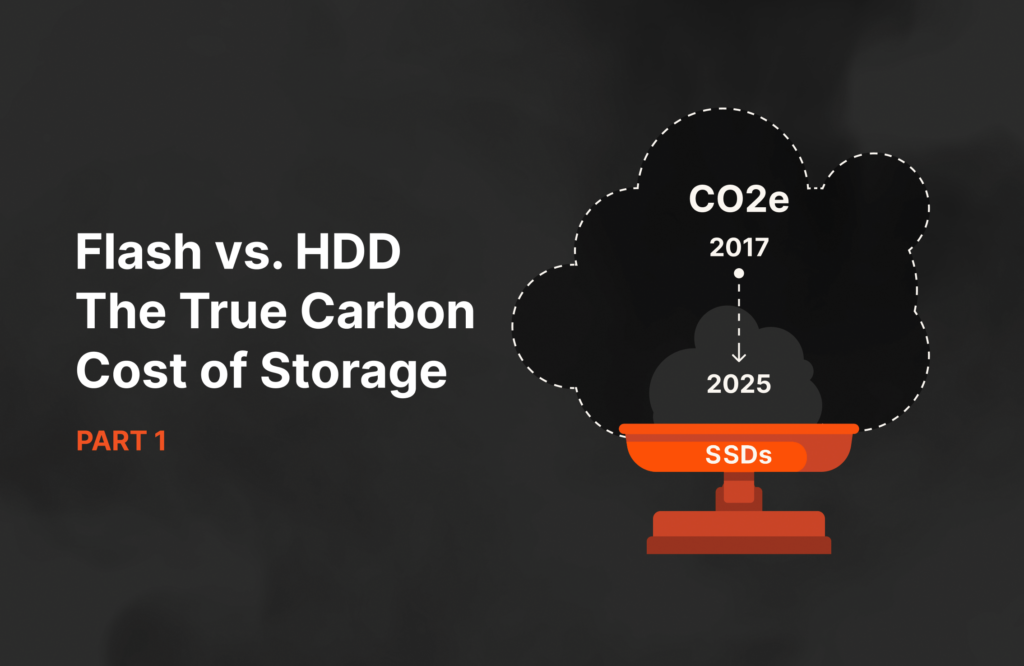When your SAP enterprise resource planning (ERP) system running on SAP HANA (either SAP ECC or SAP S/4HANA) is down, orders can’t be taken, products can’t ship, and payments can’t be made. This all means lost revenue. Given its importance, you want to make sure you have a solid solution for ensuring it’s highly available or protected in the event of a disaster.
Most SAP HANA customers today are using SAP HANA system replication (HSR) to ensure the high availability and disaster recovery systems remain in sync. It’s easy to set up and usually the SAP application or SAP BASIS team does the configuration and controls the failovers.
There are benefits to using HSR, especially for high availability scenarios:
- It can synchronously replicate at the memory layer, so, in the event of a failover, there’s no waiting for memory loads to happen before the system can be considered up. This will dramatically reduce how much time it will take for the full failover to happen.
- SAP HANA system replication is fully integrated with SAP HANA Cockpit so configuration and failover tasks can be managed by a system application team in the same tool they’re using for other SAP HANA management tasks.
But when it comes to disaster recovery where a separate data center is usually part of the equation and RPO/RTO times can be a bit higher, storage replication can certainly play a role. This is where Pure Storage® ActiveDR™ is a perfect complement to SAP HANA system replication.
What Is ActiveDR?
ActiveDR is a continuous, near-real-time, replication solution between two Pure Storage FlashArray™ systems, either within or across data centers. This allows customers a near-zero RPO of data protection across their SAP HANA environment with minimal data loss for disaster recovery purposes. These writes are continuous, not synchronous. As a result, there’s no performance impact to the source system or any requirements for low roundtrip latency between data centers.
SAP HANA benefits from this global disaster-recovery (DR) solution with no impact to key performance indicators (KPIs) while providing fast and simple failover, failback, and DR test capabilities.
What Are the Advantages of Running ActiveDR vs. Just SAP HANA System Replication?
The biggest advantage is the ability to test your DR playbook without affecting your production system or the replication itself. DR testing is always a hard thing to accomplish in any IT organization. It requires coordination between many different groups—both IT and business—and usually multi-day downtime of your production system to swap over and ensure business continuity.
ActiveDR allows you to do just this without ever stopping production or replication. You can promote the volumes on your DR site, attach them to hosts, and start up the SAP HANA database and application layer. All this can be accomplished while production is still active and continuing to replicate to the DR site. This is where ActiveDR really shines—customers can be confident that their disaster recovery playbook will work because ActiveDR greatly simplifies the testing process.

Figure 1:
And just like all of Pure’s innovations, ActiveDR is simple to set up and use. Simply put the volumes you want to replicate into a “pod” (think of this as a container of volumes) and tell the pod to start replicating to a FlashArray destination. Once the replication link is created, new read-only volumes will be created on the destination server. At any point, these volumes can be promoted to read-write for either testing or actual DR purposes—it’s really that simple!
Having confidence your business can continue in the event of a disaster helps IT professionals and business owners sleep easier. Pure ActiveDR is the perfect complement to SAP HANA system replication so you know your ERP is well protected in the event of a crisis.
Let’s take a quick look at FlashArray’s three complementary replication technologies for business resiliency. From there, we’ll dig into two new DR and data migration use cases ActiveDR enables with SAP HANA. I’ll end with a demo video.
FlashArray Replication Technology
Pure’s suite of features for business continuity and DR replication include:
- ActiveCluster™: Perform synchronous replication of one or more volumes between two FlashArray systems with the added benefit that you can read and write to both arrays simultaneously. ActiveCluster delivers business continuity with the transparent and automatic failover of storage for zero RPO and no data loss during a failover.
- Asynchronous replication: Periodically replicate volume snapshots at regular intervals. Combine it with ActiveCluster to create active-active asynchronous replication for both a zero-RPO and zero-RTO scenario.
- ActiveDR™: Continuously replicating data between two FlashArrays, ActiveDR provides streamlined DR workflows and protects data between two separate sites. You can use this near-synchronous replication at virtually any distance to build business resiliency and respond quickly to outages. You can even utilize it for migration between sites to minimize downtime.
In each replication scenario, configuration and management is simple. This ensures that you can focus on core business objectives without having to dive into complex storage operations. ActiveDR continuous replication on FlashArray occurs as efficiently as possible by sending unique data during the initial baseline or resync operations, compressing on the wire to send the data, and storing the data using FlashArray’s space-efficient technologies.
ActiveDR continuous replication offers more than just snapshot creation at regular intervals before data movement can occur. In addition, it doesn’t require the double-commit acknowledgment that synchronous replication uses, so there’s no need to wait for the transaction commit from the secondary array before sending the confirmation to the host application. As a result, it’s a great solution for situations when you:
- Require an RPO as close to zero as possible
- Need to protect your data in the same site or across geographically distant locations
- Want a simple and controlled failover
ActiveDR is also advantageous for migration use cases where you don’t need synchronous replication.
SAP HANA Migration or Failover Scenarios
Let’s look at two use cases powered by ActiveDR.
1. Storage Mobility
In this scenario, we’re migrating the SAP HANA instance between two FlashArray//X systems. We use the same compute and change only the storage. This scenario mainly applies to systems in the same location.

2. Storage and Compute Mobility
In this scenario, we’re not only migrating the instance between FlashArray//X devices at local and remote sites, but we’re also changing the compute to which the instance is attached. This scenario applies to systems in separate locations.

See How it Works
In the demonstration below, I’ve showcased how to migrate (or fail over in a disaster scenario) an SAP HANA system from a source system to a target one.
To use the functionality of ActiveDR with an SAP HANA deployment, you’ll need only two FlashArrays that are both running Purity 6.0. There are no additional license costs. And if you already have FlashArray, it just takes a simple, non-disruptive upgrade to get this feature. (FlashArray//M and //X are available now)
More Resources
Here are more resources on ActiveDR and Pure’s portfolio of modern data protection solutions.
Find these on purestorage.com:

Applications and Databases
Simplify management, boost performance, and dramatically
cut costs

Resilient SAP Environments
Make your SAP implementation easier to manage with Pure.







